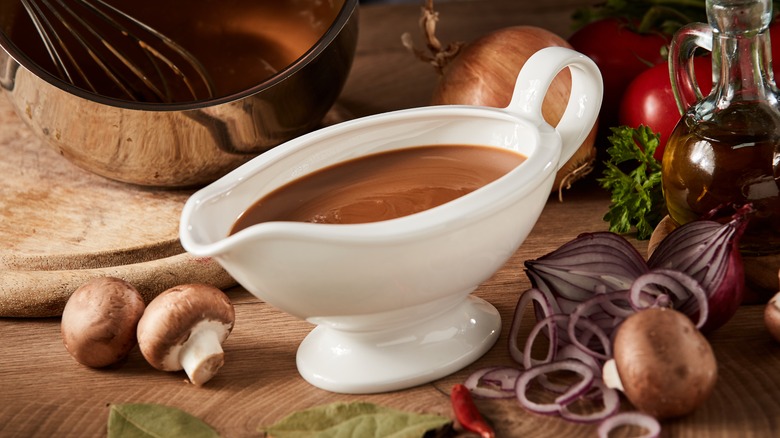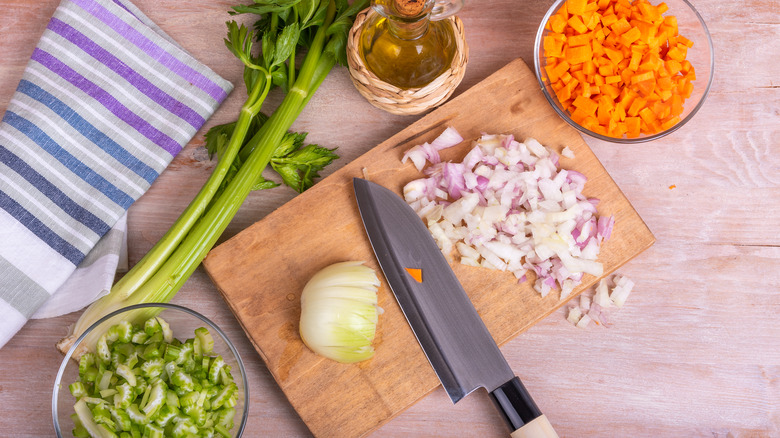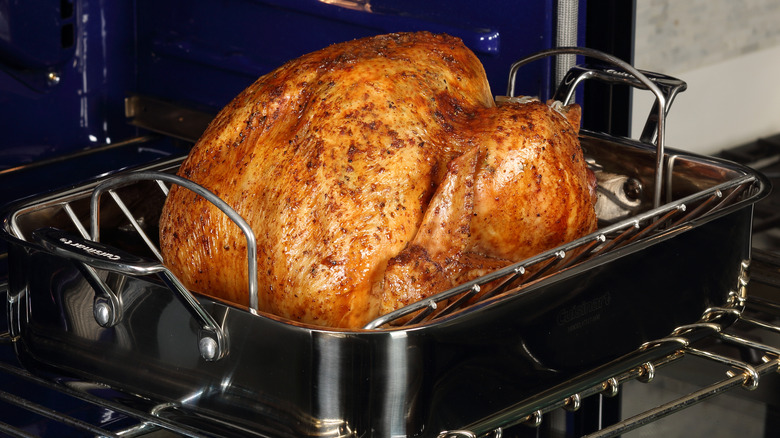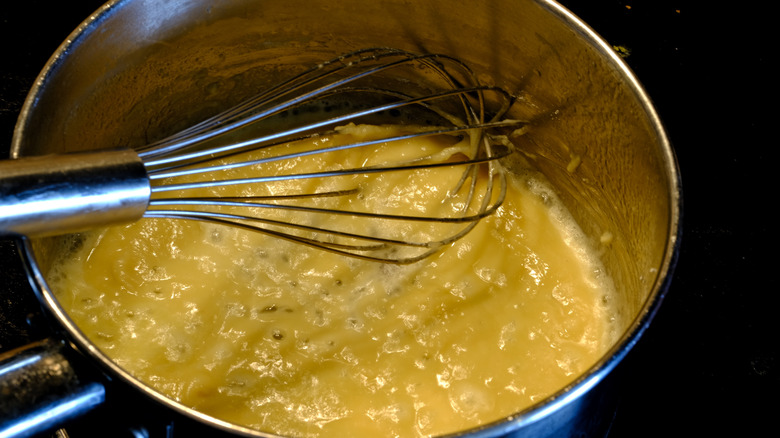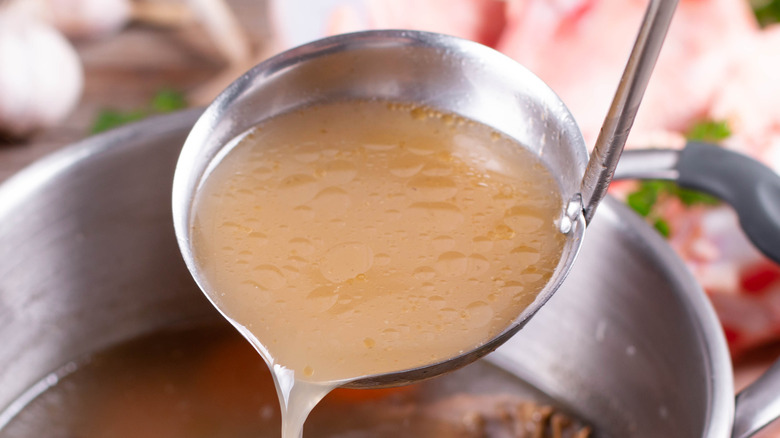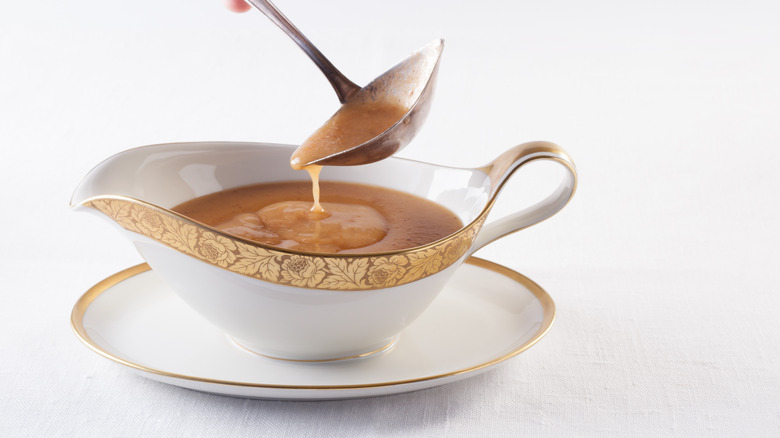5 Steps For Cooking Thanksgiving Turkey Gravy
If stuffing is the MVP and cranberry sauce is on the bench in a practice jersey, then gravy is the clinch player who comes in to score the winning basket.
While a gravy boat may be dwarfed by the colossal bird at the center of the table (which, hopefully, wasn't overcooked this year), the sauce may be the single most important item on your Thanksgiving table. It works miracles on stringy turkey, adds meaty flavor to mountain-high piles of potatoes and pulls everything together when you douse your whole plate with it (don't try to pretend you don't).
Of course, it helps if it's really good gravy— one that doesn't have any lumps, for starters. Consistency is key: It's not as thin as stock, but isn't so thick that it's a gloppy, gluey brown sauce with a skin on the surface (that's when you know you've gone too far). You want gravy that's silky, meaty, and aromatic all at the same time. You want to make a pool for it in your mashed potatoes, swirl your brussels sprouts around in it, lick it off the back of your knife.
So let's get sauced. Here are the essential steps for making gravy the centerpiece at this year's Thanksgiving dinner.
Step 1: Build a base with aromatics
Mirepoix (the French trinity made up of onions, carrots and celery) gives a great backbone of flavor, but any allium, such as leeks or shallots, can be added to the bottom of your roasting pan. While the bird cooks, the vegetables will absorb all the meaty flavors from the drippings. A bouquet garni (a fancypants term for a bundle of herbs) is a nice touch, too: Bunch together a bay leaf, a sprig of sage, some thyme and a strip of orange or lemon peel, tie it all together with twine, then drop it into your roasting pan. Whole spices, such as toasted fennel seed or coriander wrapped in cheesecloth, can be added for even more flavor.
Step 2: Time to juice
Your bird is out of the oven. While it's resting, strain the pan juices through a fine-mesh strainer into a plastic container and discard the solids. Place the container in the freezer to separate the fat and juices. From here, you have two options: Either you can remove and discard the fat, or add that prized turkey fat to your roux (what we like to do) in place of some of the butter. And that brings us to...
Step 3: Thicken with a roux, not cornstarch
Warm up those pan drippings, then get ready to cook it down and thicken it. Roux is one of the wonders of the cooking world. The combination of equal parts fat to flour, cooked in a pan on medium-low until golden brown and smooth, acts as the thickening agent, and will make your gravy thick and smooth (and provides a better texture than cornstarch). For about 5 cups of gravy, you'll need to add a roux made of ⅓ cup fat and ⅓ cup all-purpose flour. After you've cooked down the flour and butter, whisk it into the pan juices until it's completely combined.
Step 4: Heat your broth
Now it's time to start ladling some (good) broth into the roux-thickened pan juices. Whether you use chicken, turkey, or vegetarian broth, just make sure it's hot; introducing cold liquid to a starch-based sauce can result in lumps. Rather than incorporating the liquid all at once, add the hot broth a ladleful at a time, whisk constantly and take your time so you'll have more control of the consistency of your gravy. Keep cooking down the liquid until it gets thick enough to coat the back of a spoon.
Step 5: Finish strong
At this point, you have a deep, rich sauce with a lot of complex flavors, so don't go ruining a good thing. Once you have the right consistency, season with salt and a pinch of coarse black pepper. To go the extra mile, a single, swift swipe of lemon zest and a knob of butter or splash of cream will do. You can add some finely chopped chives or, to change it up, a few drops of fish sauce or soy sauce, but anything else should be added with caution.
But hey, stuff happens at Thanksgiving. You step away to watch a football game, drink a little too much cider. No judgments. If you get distracted and end up with lumpy gravy, grab a fine-mesh strainer or put the whole mess in a blender until it's nice and smooth. And you're in gravy heaven.
